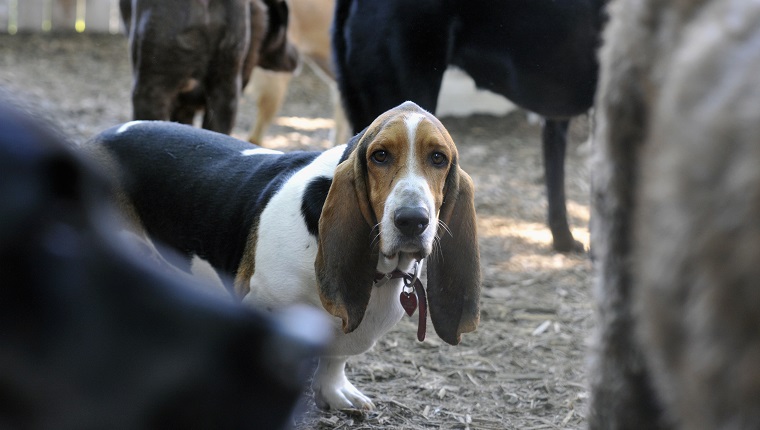With fall here again, so too is the dreaded “flu season.” If you’re a pet parent, an important question you might ask yourself is, “Does my dog need the flu shot?” The quick answer is maybe; it depends on your dog’s lifestyle and risk of exposure.
There are a lot of factors to consider before deciding if your pooch needs a flu vaccination. It’s still somewhat new but is regarded as effective and safe.
Here are a few things to know about dog flu and if you should consider the vaccination for your pooch.
What Is The Dog Flu?
There are currently two known strains of canine influenza: H3N8 and H3N2.
The H3N8 canine influenza strain was first discovered in Florida 2004 in racing Greyhound dogs. Researchers believe this strain originated from horses and jumped to the Greyhounds.
Since being detected, the H3N8 canine influenza strain has been found in dogs in most of the United States, including the District of Columbia area.
The H3N2 canine influenza strain was identified during the spring of 2005 in the Chicago area. This followed an outbreak of respiratory illnesses in a number of dogs.
Prior to this discovery, this specific strain was restricted to Asian countries like South Korea, China, and Thailand. Researchers believe this strain might have transferred from live bird markets to dogs in the same area.
There has been no evidence that either strain of the canine influenza virus can infect humans.
How Is The Dog Flu Transmitted?

For both strains, the influenza virus can be transmitted through respiratory secretions like dogs coughing, sneezing, and barking.
Dogs have an increased risk of infection if they are in close proximity to other dogs with the flu, especially if they are together in places like groomers, kennels, shelters, and daycare services. Shared objects like water bowls, food, kennels, and leashes can also transmit if used by dogs with either strain of the canine influenza.
Both strains can remain viable on surfaces and objects for up to 48 hours, clothing for 24 hours, and on hands for twelve hours.
The H3N8 influenza strain has an incubation period of one to five days, with flu symptoms appearing two to three days after exposure.
The H3N2 strain might start showing signs in your dog after two to eight days after exposure. Dogs are most contagious during the incubation period and can spread the virus even if they are not yet showing signs of the flu.
What Are The Symptoms Of The Dog Flu?
Some of the signs of the dog flu for both strains are:
- Cough (can be dry, soft, or moist)
- Discharge from the eyes and nose
- Lethargy
- Decrease in appetite
- Fever
- Pneumonia (Puppies and older dogs with health issues and weaker immune systems)
Even with these symptoms present, it’s important to take your dog to their veterinarian to get tested for canine influenza. These symptoms alone cannot fully guarantee they have the flu, as they can also be indicators of other medical conditions.
The treatment provided by your vet for canine influenza will likely include fluids for hydration, anti-inflammatory medications for the fever, and antibiotics for any other bacterial infection they might discover.
So Is Vaccinating Your Dog Necessary?

Again, the vaccine for canine influenza, regardless of strain, is considered a “lifestyle vaccine.” The necessity for vaccination really depends if you frequently take your pooch to boarding kennels, daycare facilities, dog parks, and so on.
In general, the vaccine is to protect pups who face risk of exposure to canine influenza. If your dog mostly stays at home and you do not live in the city where millions of germs and bacteria can transmit to them from other dogs, then it may be safe to go without vaccination.
But for precautionary reasons, you must make sure to consult your vet for further information.
What do you think of dog flu shots? Will you vaccinate your dog for canine influenza? Let us know in the comments below!



